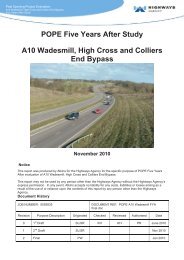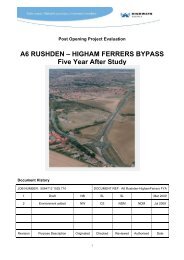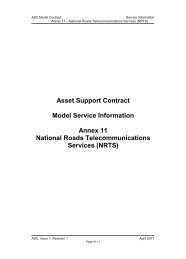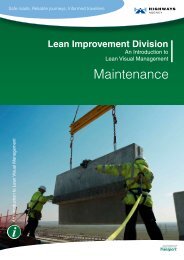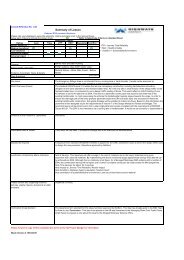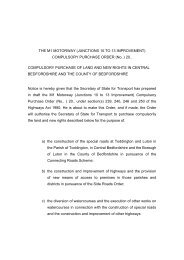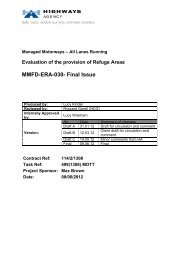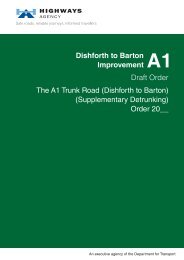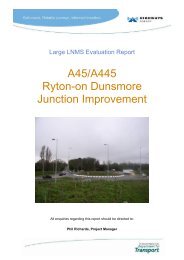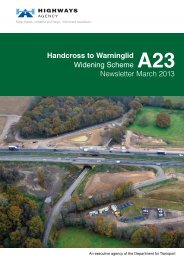M25 Managed Motorways J16 - Highways Agency
M25 Managed Motorways J16 - Highways Agency
M25 Managed Motorways J16 - Highways Agency
- No tags were found...
Create successful ePaper yourself
Turn your PDF publications into a flip-book with our unique Google optimized e-Paper software.
forecast traffic flows. Essentially, the traffic model is a computer based representation ofthe physical characteristics of the road network, the behaviour of different types of trafficusing the network and the origins and destinations of that traffic. The model is built andcalibrated to represent the road network (the “supply”) and the traffic “demand” upon it atthe current time “the base year”. A set of independent traffic count and journey time datanot used in the calibration process is then used to “validate” the base year predictions ofthe model.Using the behavioural relationships between supply and demand contained within themodel, it is possible to alter the network to represent a new road scheme, or a changethe traffic demand (to represent traffic growth), and identify how traffic flows and speedschange as a result. This provides the information necessary to identify changes injourney times, journey time reliability, vehicle operating costs, tax revenues andaccidents across the network in any modelled future year. The information is also usedto assess the environmental impact of a scheme in terms of greenhouse gas emissions,air quality and noise.Naturally there is some uncertainty in relation to forecasts of future traffic levels whenmodelling future years. These forecasts are made at a national level through the DfT’sNational Transport Model and are based upon certain assumptions regarding householdgrowth, income growth, changes in fuel price and how these affect the level of carownership and usage. Changing these core assumptions can affect the level of futureyear traffic flows and hence future year benefits.In the case of CM, the IAN Appraisal of Technology Schemes contains look up tables ofthe benefits of CM schemes over their 30 year life for different levels of daily traffic flowin opening year. It is evident from these values that the journey time reliability andaccident benefits are unlikely to change by more than 10%, even if future traffic growthwere significantly higher or lower than that which is forecast using the NationalTransport Model assumptions.Whilst the benefits of CM show little sensitivity to likely future traffic flow levels, this isnot the case for MM and other road schemes which increase the available road space.For this reason, it is now a requirement of WebTAG that different scenarios of futuretraffic growth are modelled, in addition to the most likely or “Core Scenario”. However, atthe time the <strong>M25</strong> modelling work was undertaken, there was no accepted approach forthe treatment of uncertainty in relation to forecasting future traffic growth. As a result, itwas only possible to produce a most likely or Core Scenario forecast and it is theseflows which have then been used to produce a “Best Estimate” of the benefits. Resultsfor the Lowest and Highest Benefits Scenarios are not therefore available, though thesewould be little different to the Core Scenario given the insensitivity of the benefits tosignificant difference in traffic flow levels. Certainly the difference would not justify thetime and expense involved in producing alternative forecasting scenarios and economicassessments.DfT appraisals following WebTAG guidance result in a single “Best Estimate” ofconstruction costs which includes a Risk Allowance (based upon a Quantified RiskAssessment) and Optimism Bias. The estimate is refined (and the level of OptimismBias reduced) as the scheme progresses towards implementation and design work29



